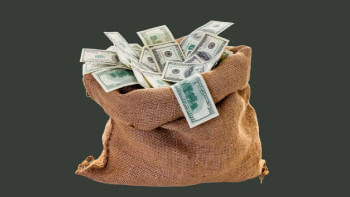Inspiration for youngsters
NEW DELHI, Feb 2: A whole new generation of chess players has risen in India, inspired by Vishwanathan Anand's exploits in the international arena. Anand's successes have also changed public perceptions of the game, leading to an unstinted flow of corporate sponsorships.
No longer will anyone mistake the Sicilian gambit or the queen's opening for references to the mafia or the royalty. Chess has caught the imagination of the Indian public and hundreds of talented players are being groomed at scores of chess academies and clubs across the country.
The changed scenario was tellingly in evidence last July when FIDE, the game's governing body, released its ratings. India had 368 rated players, making it the Asian leader in the game. In the early 1990s, India had barely 100 rated players.
India has three Grand Masters - Anand, Dibyendu Barua, who became the national championship at 16 and beat the fancied Victor Korchnoi when he was just 15, and Pravin Thipsay, the first Indian to win a Grand Master norm in 1984. Last year, Krishan Sasikiran became the country's 25th International Master winning three norms in the space of six months.
In 1978, V Ravi Kumar created a sensation when he became the first Indian to win the junior Asian title in 1978. From the mid-1980s, Indians regularly won this title.
November 1996 saw the emergence of another chess prodigy - Parthipadu Harikrishna of Andhra Pradesh won the world under-10 title at Menorca, Spain. A year later Koneru Humpy, from Vijayawada in Andhra Pradesh won the world championship in the under-10 category for girls. Both these prodigies admit that their main inspiration came from the feats of Vishwanathan Anand.
Harikrishna's feat was staggering. He is the first player from a rural background in India to win either a national or an international title. His father P Nageshwar Rao owns three acres of barren land in a village in Guntur district and the family struggled to make ends meet.
Harikrishna learnt chess watching his grandfather T Ranga Rao play in the village. Harikrishna's talent was nurtured by the Vignan Educational Institute (VGI), which is run by chess buff L R Rathiah. In 1995, Rathiah spotted Harikrishna's talent and has since then promoted him by providing 100,000 rupees (2,630 dollars) in assistance every year.
Last year, Harikrishna won a silver medal and Chitra Sridhar a bronze medal in the under-12 category in the world rapid chess championships at Euro Disneyland, Paris. It was the first time that two Indians won medals in a world rapid meet.
Humpy is also sponsored by an educational institution, the Siddartha Residential School at Edupugallu in Vijayawada. The director of the school, Vedde Ramakrishna Prasad, has provided Humpy with a computer, a chess database and financial aid worth 300,000 rupees (7,900 dollars).
The chess boom has attracted unusual sponsors to the game. When he first competed for the world title in 1991, Anand was sponsored by the Tamil Nadu-based Ramco industrial group. They had no background in sports sponsorship but felt that Anand fitted their corporate image. During Anand's formative years this group paid his travel and other expenses while participating in tournaments in Europe.
In the early decades of the 20th century, India had a chess hero, Mir Sultan Khan, who received international recognition when there was no system of Elo ratings. In 1928 he won the national championship and the prestigious British championship and repeated the feat in 1932 and 1933. He was considered among the world's top 10 players.
But the chess boom did not happen until Anand came on the scene. He became a role model and his spectacular successes made the corporate sector realise the game's potential. An industrial house which promoted chess even in the pre-Anand days is the Bhilwara Group. L N Jhunjhunwala, chairman emeritus of the LNJ Bhilwara Group, started the Botwinnik Chess Academy in 1979.
The academy, named after Mikhail Botwinnik of the erstwhile Soviet Union, world champion from 1948-57, 1958-60 and 1961-63, is an affiliate of the Delhi Chess Association and nurtures young talent in the capital. They charge a nominal fee of 50 rupees (1.32 dollars) from each player a month. Tanya Sachdeva, who became the youngest Indian to win a gold medal in any event when she won the Commonwealth title at the age of eight in 1993, is the most famous product of the academy.
Source - India Abroad News Service

 For all latest news, follow The Daily Star's Google News channel.
For all latest news, follow The Daily Star's Google News channel. 



Comments